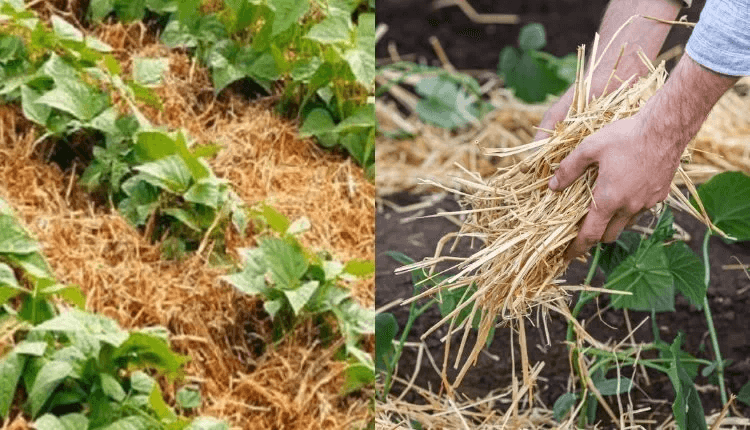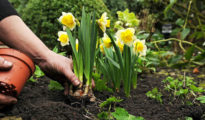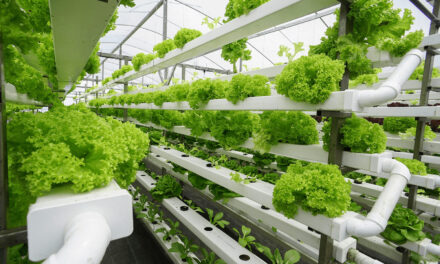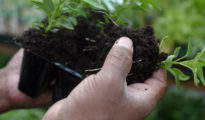In the heart of every thriving garden lies a silent hero: mulch. Often underrated, this element plays a vital role in preserving the health and vitality of plants by regulating soil temperature, suppressing weeds, and most importantly, retaining soil moisture. The necessity for adequate moisture cannot be overstressed. Proper moisture ensures a steady supply of nutrients, a necessity for plant growth and health. This article delves into the benefits of mulching for moisture retention and provides a comprehensive guide to the best materials and methods.

The Science of Soil Moisture Retention
When we water plants, it's not just to quench the plants' thirst. Watering ensures that soil particles hold onto the vital moisture plants need for photosynthesis and other metabolic processes. In the absence of adequate mulching, various factors such as evaporation, runoff, and inefficient water penetration can result in rapid moisture loss.
Mulch acts as a protective barrier. It limits the impact of the sun, reducing evaporation from the soil's surface. Additionally, it decreases water runoff, ensuring that water penetrates the soil efficiently and reaches the plants' roots.
Benefits of Mulching
Beyond moisture retention, mulch offers a variety of benefits:
- Temperature Regulation: Mulch insulates the soil, keeping it cooler in the summer and warmer in the winter.
- Weed Suppression: A layer of mulch can prevent weeds from accessing sunlight, thus suppressing their growth.
- Soil Enrichment: Organic mulches decompose over time, adding nutrients to the soil and enhancing its texture.
- Erosion Prevention: Mulch acts as a shield, reducing the impact of heavy rains on the soil and preventing erosion.
- Aesthetic Appeal: A well-mulched garden looks neat, organized, and often more vibrant.
Best Materials for Mulching
While the advantages of mulching are clear, it's essential to choose the right material for your specific needs. Here's a rundown of some of the best mulch materials for retaining soil moisture:
- Straw or Hay: Ideal for vegetable gardens. They break down relatively quickly, enriching the soil. Ensure the hay is weed-free to prevent unintentional seeding.
- Wood Chips or Bark: Perfect for perennial beds and around trees. They decompose slower than straw, offering longer-lasting protection. They also have a natural and appealing look.
- Leaves: Shredded or whole, leaves are a great organic mulch. They're especially suitable for woodland gardens and can be easily collected in the fall.
- Grass Clippings: Fresh or dried, they are rich in nitrogen and great for vegetable gardens. However, avoid clippings from lawns treated with herbicides or pesticides.
- Compost: Provides nutrients along with moisture retention. It's best used as a thin layer beneath another mulch type.
- Pebbles or Gravel: Ideal for succulent gardens or other drought-tolerant plants. These inorganic mulches won't decompose but can add aesthetic appeal and retain moisture effectively.
- Newspaper or Cardboard: A layer of these can suppress weeds and hold moisture. It's often a good idea to cover them with another mulch type for aesthetics.
Best Mulching Methods
- Depth Matters: For most organic mulches, a 3-4 inch layer is optimal. For finer mulches, like grass clippings, a 1-2 inch layer will suffice. Inorganic mulches like gravel can be used in a 2-3 inch layer.
- Keep Mulch Away from Plant Stems: Piling mulch against stems can cause rot. Leave a little space around each plant.
- Replenish as Needed: Over time, organic mulches will decompose. Replenish your mulch layer as it thins out to maintain the benefits.
- Water Before Mulching: Ensure the soil is moist before you apply your mulch. This will help lock in the moisture.
The Relationship Between Soil Type and Mulching
The type of soil in your garden plays a significant role in determining how well it retains moisture. For instance, sandy soils drain quickly, while clay soils retain water but may drain poorly. Knowing your soil type can help you make an informed decision when choosing a mulch material. For sandy soils that drain too quickly, organic mulches like straw or wood chips can help improve water retention. In contrast, gardens with clayey soils might benefit from a thinner layer of mulch to prevent waterlogging.
Mulching in Different Seasons
The timing of mulch application can also impact its effectiveness. In the spring, applying mulch can help the soil warm up more slowly, which might be beneficial for certain late-season crops. Conversely, fall mulching can help to insulate soil, providing a warmer environment for root systems during the colder months.
Organic vs. Inorganic Mulches
When it comes to retaining moisture, organic mulches generally outperform inorganic ones. Organic materials like wood chips, straw, and leaves not only help to retain moisture but also improve soil structure and nutrient content as they decompose. On the other hand, inorganic mulches like gravel and pebbles won't improve your soil's fertility, but they will last longer and are often chosen for aesthetic reasons or for specific types of plants like succulents.
Specialized Mulching Products
There are also specialized mulching products on the market, designed specifically for moisture retention. These can include moisture-retaining pellets that expand when wet, slow-release watering bags, or even high-tech solutions like hydrogels. While these specialized products can be effective, they are generally more expensive than traditional mulching materials.
The Importance of Proper Installation
No matter what type of mulch you choose, proper installation is crucial. Uneven mulching can lead to pockets of soil that dry out quickly, negating the benefits of your hard work. Use a rake or your hands to spread the mulch evenly, and consider using a soil moisture meter to monitor the effectiveness of your efforts.
Maintenance is Key
One common misconception is that mulching is a one-time job. In reality, maintaining your mulch layer is critical for ongoing soil moisture retention. Organic mulches will break down over time and will need to be replenished. Keep an eye on the thickness of your mulch layer and top it up as needed to ensure continuous benefits.
Final Thoughts
Mulching for soil moisture retention is not a one-size-fits-all task. Your local environment, the specific needs of your plants, and even the time of year can all impact how effective your mulching efforts will be. However, by understanding the underlying principles, choosing appropriate materials, and implementing best practices, you can go a long way toward ensuring your garden is both beautiful and bountiful.
In conclusion, mulching is an integral component of sustainable gardening. By understanding its benefits, choosing the right materials, and applying best practices, gardeners can ensure that their plants have a consistent and adequate moisture supply. Embrace mulching and watch your garden thrive!



















